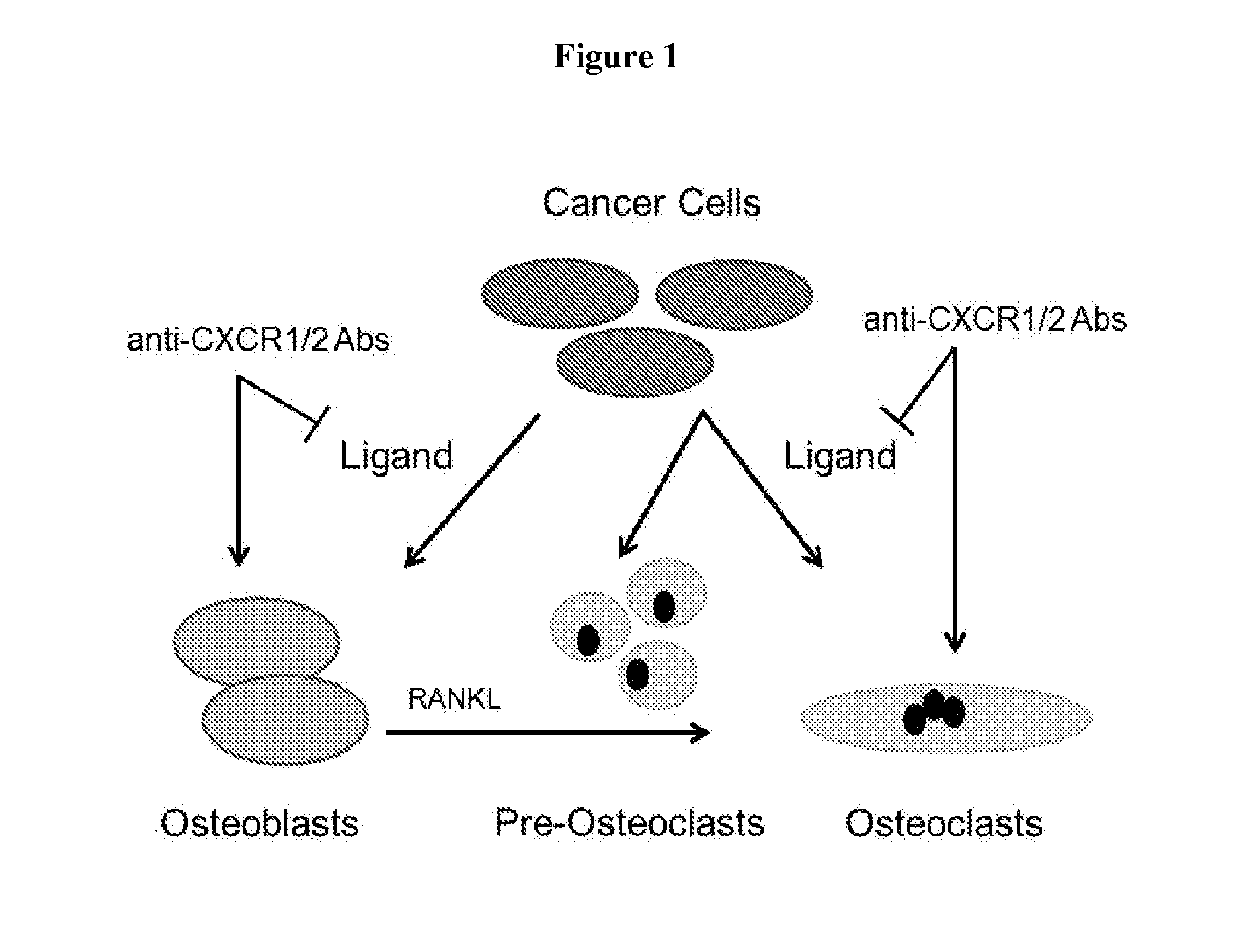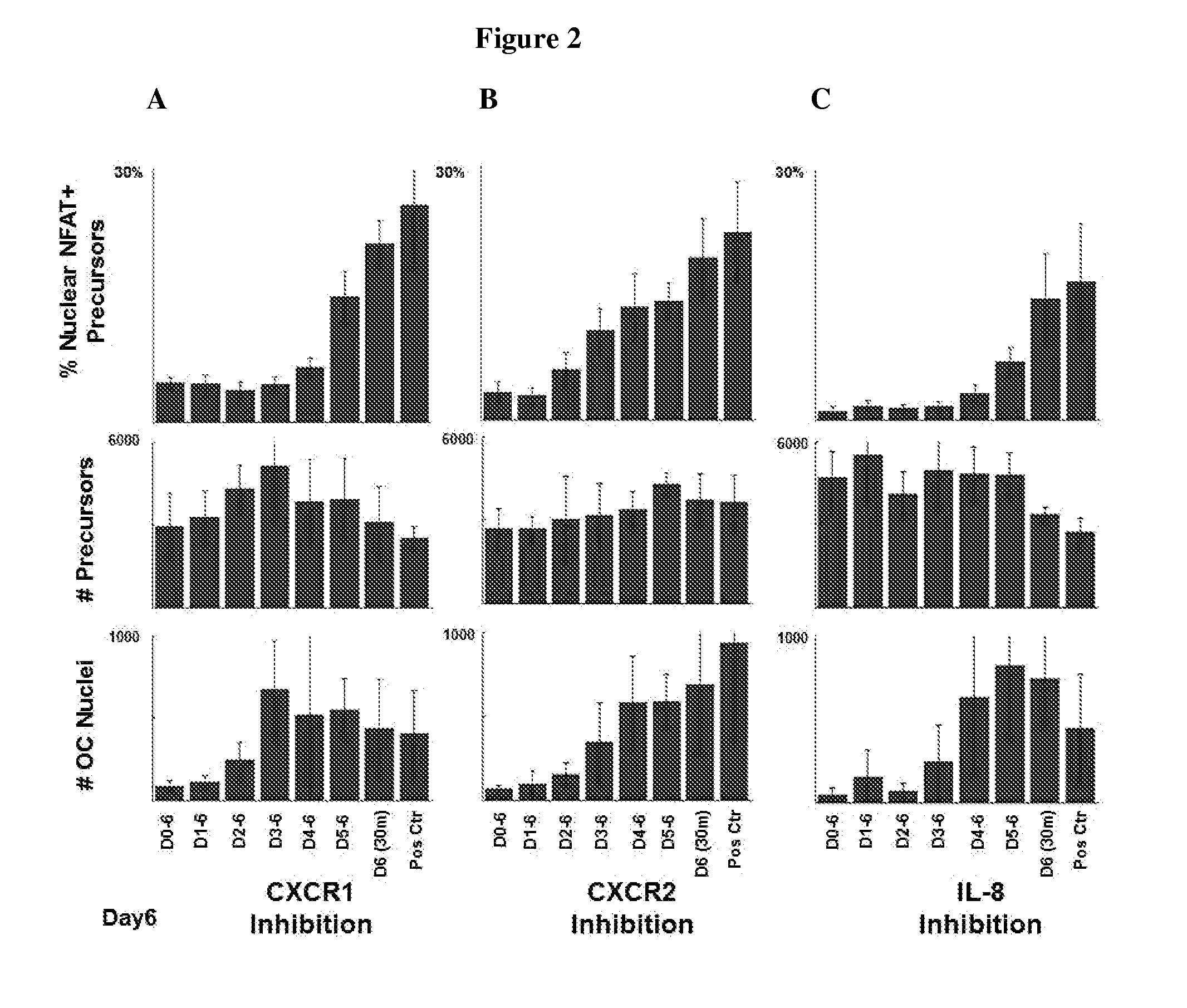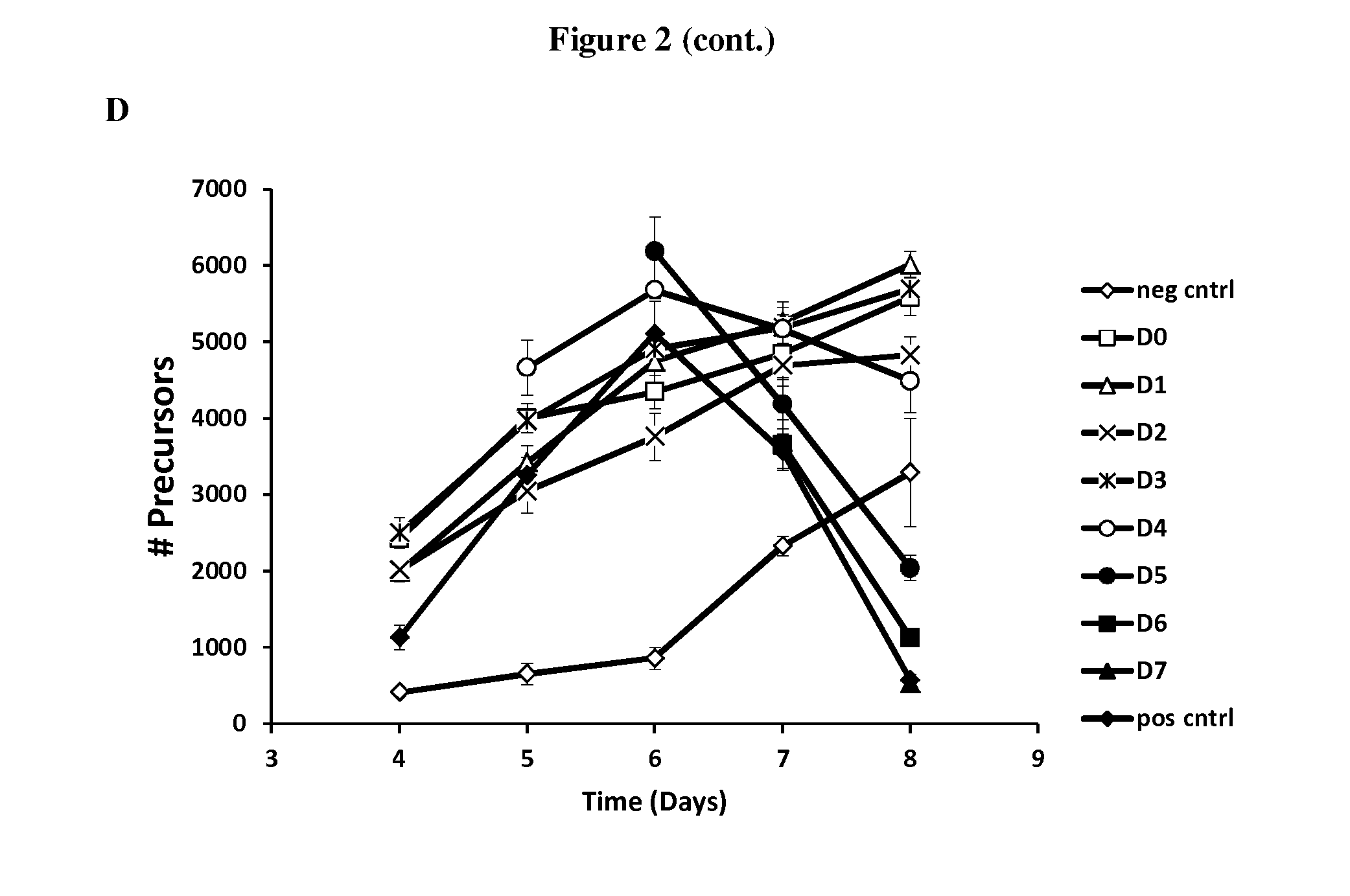Compositions and methods for treating osteolytic bone disorders
a technology for osteolytic bone disorders and compositions, applied in drug compositions, antibody medical ingredients, peptides, etc., can solve the problems of osteolytic bone loss and its associated symptoms, and achieve the effects of inhibiting bone metastases, inhibiting bone resorption, and promoting bone deposition
- Summary
- Abstract
- Description
- Claims
- Application Information
AI Technical Summary
Benefits of technology
Problems solved by technology
Method used
Image
Examples
example 1
Inhibition of IL-8 Blocks Osteoclast Differentiation
[0087]Treatment of osteolytic disease requires that a therapeutic be efficacious at blocking osteoclast formation regardless of the differentiation stage when exposed to the therapeutic. To investigate the effectiveness of simultaneous inhibition of both CXCR1 and CXCR2 throughout the osteoclast differentiation cascade, addition of blocking antibodies to both receptors was delayed by a range of intervals after initiation of differentiation.
example 1.1
[0088]Osteoclast precursor cells (Lonza; Cat#2T-110) were seeded in multi-well tissue culture plates and cultured in osteoclast precursor medium (Lonza; Cat# PT-8001) supplemented according to the manufacturer's instructions. To induce osteoclast differentiation, the culture medium was supplemented with MCSF (33 ng / mL) and RANKL (33 ng / mL). CXCR1 (R&D Systems; Cat# MAB330), CXCR2 (R&D Systems; Cat# MAB331), and IL-8 blocking antibodies were added daily to each well by adding 5 μL of 40× concentrated antibodies to achieve a final antibody concentration of 30 μg / mL, 30 μg / mL, and 50 μg / mL, respectively, on experimental days 0-6, 1-6, 2-6, 3-6, 4-6, or 5-6. The cultures were fixed with 3.7% paraformaldehyde on experimental day 6 and stained for markers of differentiating and mature osteoclasts using an antibody against NFATc1, a transcription factor that regulates osteoclastogenesis (Santa Cruz; Cat# sc-13033) and anti-CD51 / CD61 (BD Biosciences; Cat#550037) antibodies, respectively. Im...
example 1.2
[0090]All conditions contained 33 ng / mL of MCSF and 33 ng / mL of RANKL with the exception of the negative control (neg cntl) which did not contain RANKL. The positive control (pos cntl) contained RANKL but did not contain antibodies. Treatments consisted of a combination of CXCR1 antibody (45 μg / mL, final concentration) and CXCR2 antibody (45 m / mL, final concentration) added daily as 5 μL of 40× concentrated antibody solution per the schedule in Table 1. Medium was not changed during the experiment. Cultures were fixed on days 4, 5, 6, 7 and 8.
TABLE 1CXCR1 and CXCR2 antibodies added at 40x final concentration on days indicatedfor cultures fixed on Day 8. For cultures fixed on earlier days, the sameschedule was used, but no antibodies were added on the day of fixation.No antibodies added for negative or positive controls.Antibody Addition on:Day 0Day 1Day 2Day 3Day 4Day 5Day 6Day 7Treatment:D 0XXXXXXXXD 1XXXXXXXD 2XXXXXXD 3XXXXXD 4XXXXD 5XXXD 6XXD 7Xneg cntlpos cntl
[0091]Regardless of...
PUM
| Property | Measurement | Unit |
|---|---|---|
| Therapeutic | aaaaa | aaaaa |
| Bioabsorbable | aaaaa | aaaaa |
Abstract
Description
Claims
Application Information
 Login to View More
Login to View More - R&D
- Intellectual Property
- Life Sciences
- Materials
- Tech Scout
- Unparalleled Data Quality
- Higher Quality Content
- 60% Fewer Hallucinations
Browse by: Latest US Patents, China's latest patents, Technical Efficacy Thesaurus, Application Domain, Technology Topic, Popular Technical Reports.
© 2025 PatSnap. All rights reserved.Legal|Privacy policy|Modern Slavery Act Transparency Statement|Sitemap|About US| Contact US: help@patsnap.com



